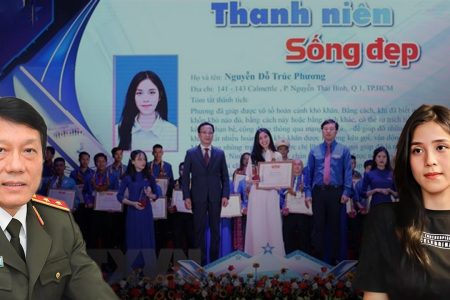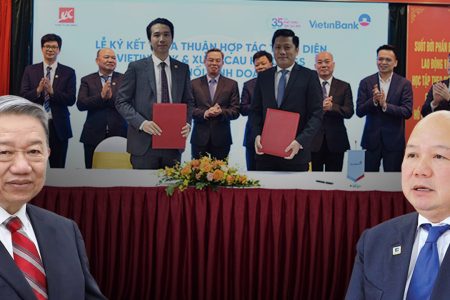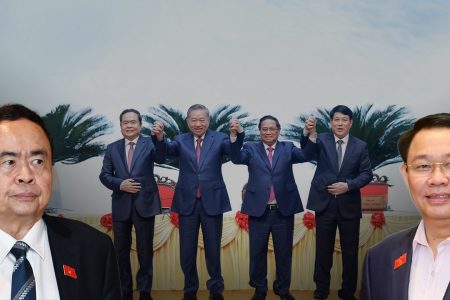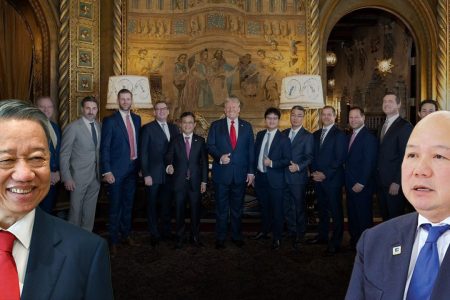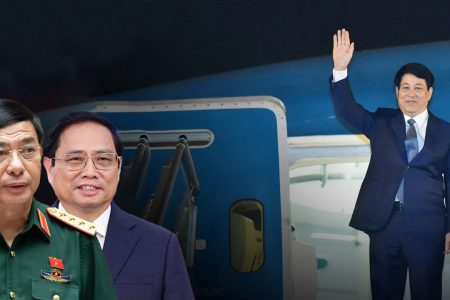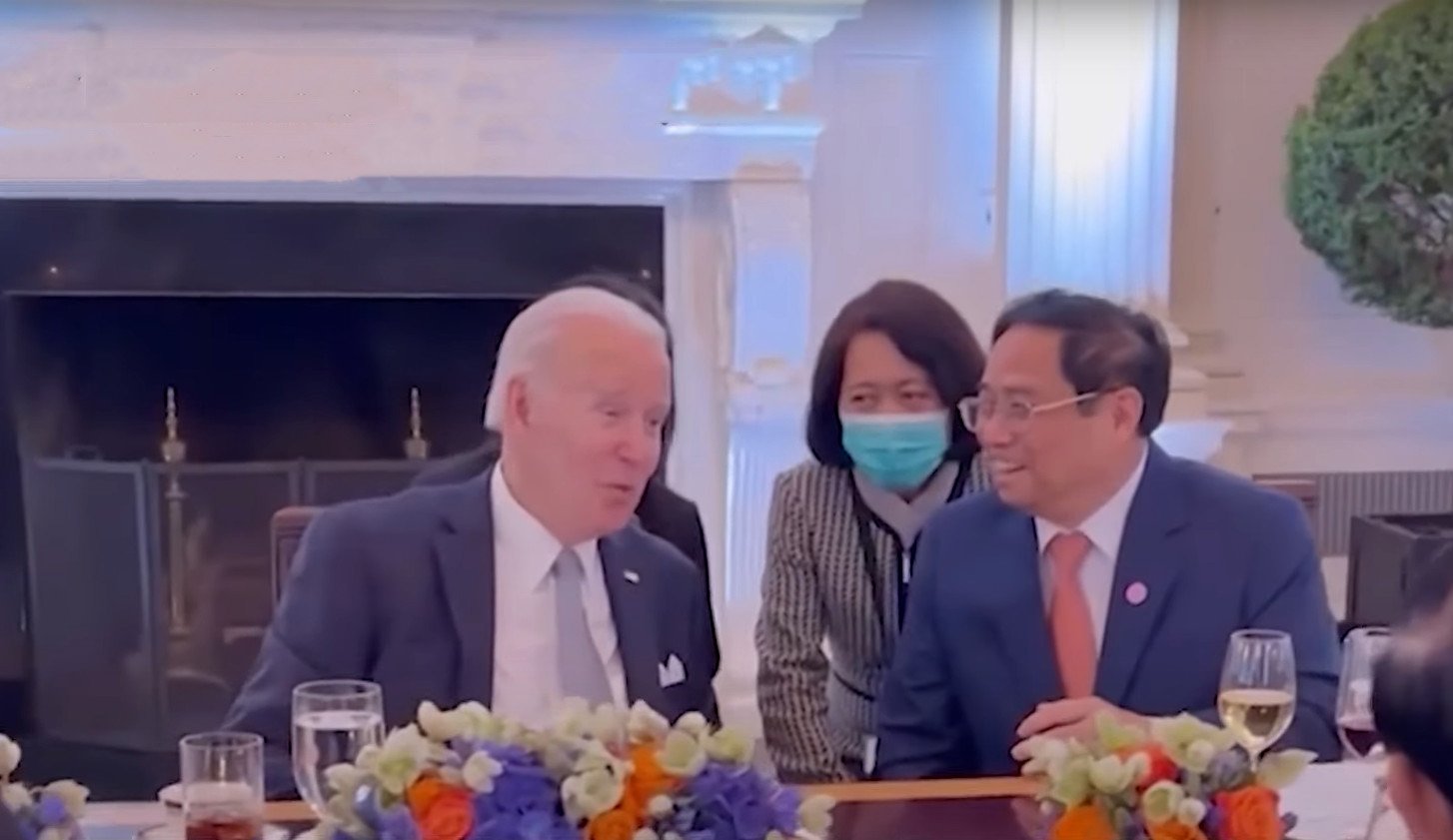
When Vietnamese Prime Minister Pham Minh Chinh spoke at a national press award ceremony in June, he called for building a professional journalism and media industry while continuing to act as a „sharp ideological weapon” to protect the ideological foundation of the Communist Party.
More than a month earlier, Vietnam’s leading state media outlets clearly demonstrated that propaganda role when they released videos taken privately at a dinner hosted by US President Joe Biden to leaders of ASEAN countries at the White House, an act that former senior US diplomats and front desk officials say is a violation of diplomatic protocol and common courtesy.
The videos show Mr. Biden and Mr. Chinh happily chatting at the dinner table in the White House’s State Room, giving the impression of a warm relationship between the two leaders. But in the frame were moments of other leaders from the Association of Southeast Asian Nations eating and drinking, something that the media was not authorized to record by the White House.
It is likely that a member of the Vietnamese delegation that attended the dinner on May 12 recorded the video and then provided it to the state media to report on the event.
The case not only raises questions about the professionalism of these media outlets in knowingly contravening well-defined White House rules regarding the media’s access to news coverage of this event but also shows the extent of control of the Vietnamese state over what the media in this country is „green-lighted“ to publish.
In other words, the images of Chinh’s „successful“ visit are what Hanoi wants its people to see, and that message has been widely circulated in the state-controlled media in Vietnam.
The Office of the Government of Vietnam, the Ministry of Foreign Affairs of Vietnam, the Vietnamese Embassy in the United States, and Vietnamese state media did not respond to VOA’s emails asking about the filming and publication of the videos.
No freedom of the press
There are more than 800 news outlets in Vietnam, according to official government statistics, but the Communist Party, government agencies, and the military hold near-total ownership or control. Independent media outlets are almost non-existent in the country.
Reporters Without Borders (RSF), a Paris-based advocacy organization for freedom of information, rates Vietnam as one of the countries with the lowest press freedom in the world, ranking at the bottom of the list (174/180) on this organization’s World Press Freedom Index 2021.
Daniel Bastard, Regional Director for Asia-Pacific at RSF, commented that by spreading the videos shot at the White House, Vietnamese state media followed instructions from the Communist Party’s Central Commission on Propaganda and Education to serve propaganda purposes.
“Journalists in Vietnam are trying to do their jobs well, including those working for state media, but they are forced to follow the line of the Central Commission on Propaganda and Education,” he said. “This is all the sadder because it clearly contradicts Vietnam’s current Constitution and the original principles of the Communist Party of Vietnam.”
Former reporters who worked for Vietnam’s top state-run press agencies told VOA about the „incredible“ role the Central Commission on Propaganda and Education plays in guiding nearly daily coverage, with specific guidelines to thoroughly disseminate to each level of management within these agencies. Strict control is exercised from content to form, across areas from politics to sports.
“The front page is always the news of ‚praying to the old man.‘ The four of the ‚four pillars‘ went that day, there must be news for all four of them. Sometimes the pages have to be weighed, the pictures have to be the same, and the words have to be roughly the same,” said a former reporter who worked for a major state-run newspaper, using a term referring to Vietnam’s four top leaders are the general secretary, the president, the prime minister, and the chairperson of the National Assembly.
“Honestly, there’s never been any bad news about the four pillars. Bad news inevitably gets ripped off, and can never be posted. In the old days the news [about the foreign trips of the leaders] we used to get from the News Agency. They post that this guy says this and that, shakes hands and then commits this and that, not going there to see if there is any side news or negative news about them. Those who write articles themselves, they have to get rid of those things in the first place for self-censorship.”
Another former reporter who held a leadership role at a Vietnamese news agency in the 2000s said that coverage of leaders‘ foreign visits is often seen as „complicated“ and domestic press agencies often wait for official news from the state-run Vietnam News Agency to avoid errors.
“When the Vietnam News Agency broadcasts official news, they certainly consult with both the diplomatic side and the Vietnamese police in some cases, and even consult with higher departments in the Vietnamese government, the ruling system belongs to the Party,“ the person said. “The participation of Vietnamese reporters on official trips is often just a side story. As for the official content, it will have to follow the ready-made product.”
“In some sensitive cases, people will not say the news from News Agency or the Ministry of Foreign Affairs. Newspapers automatically use images, use video clips as if they were their own property. But the ‚must-wear uniform‘ thing can be recognized by the fact that it’s all very similar even though it doesn’t have a source.“
Professionalism
Video clips shot inside the White House were used in the reports of a series of leading Vietnamese news agencies, including the Government Electronic Newspaper, Vietnam Television, People’s Police Television, and Zing News news website.
There is an almost complete similarity in camera angles and image quality, an indication that the video is likely coming from the same source.
VOA looked through news programs and individual video clips and found that seven separate videos were used over and over again. They were filmed at different times of the meal from the moment the leaders entered the State Dining Room and settled into their seats until the plates were removed from the table at the end of the meal.
Four of these seven videos focus on Mr. Biden and Mr. Chinh chatting with each other while the other leaders are having a meal.
Journalists and press experts in the United States consulted by VOA say it is not unusual for media outlets to publish content or images from an event that is not normally accessible to the press. However, they see problems with journalistic professionalism in the way these video clips are allowed to be published.
Christina Bellantoni, professor of professional practice at the University of Southern California’s Annenberg School of Journalism’s Media Center, said there appeared to be a violation of the press access rules set forth by the White House for the media reported on the dinner that night.
“Is it too dangerous? No, the problem seems to be a lack of politeness.”
“If a reporter comes to me and offers to write about a meeting and two leaders eating and saying that they will see each other again in the future and they have a good chat, I am not sure whether to publish that story or not,” said Ms. Bellantoni, who has more than 20 years of experience as a reporter and editor at news agencies in the US.
“Resources are limited but there are far more important things to report. And basically, you should report the things that really need to be reported, and shine in places where there is no light.”
Stacey Woelfel, director of the Jonathan B. Murray Center for Journalism and Journalism at the University of Missouri School of Journalism, said that news outlets in the United States have complete discretion about whether or not to publish material produced by third parties. Editors will review the material for newsworthy content, truthfulness and whether publishing the material is in line with the editorial’s standards of ethics, he said.
“There seems to be no transparency in how Vietnamese state media collect or publish their content. Normally, the US media will make it clear how and where they got the video if it wasn’t made by themselves,“ he said. “The exception would be if the video came from an undisclosed source (which the press agency did not name), but the press agency would indicate that the video or information came from an anonymous source.”
The expert said that if the news agency receives a government order to publish a video, „they are no longer a news agency by the usual definition and journalistic ethics doesn’t really apply“ in this case.
“I think it would be appropriate to call it a propaganda agency,” Mr. Woelfel said.
Thoibao.de (Translated)








